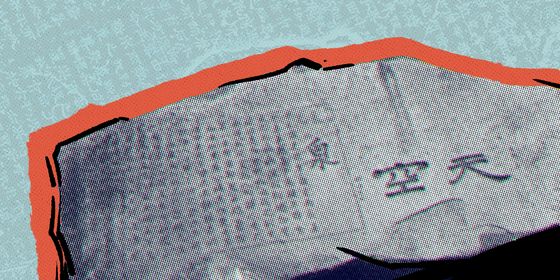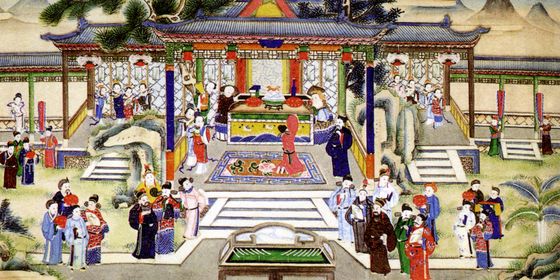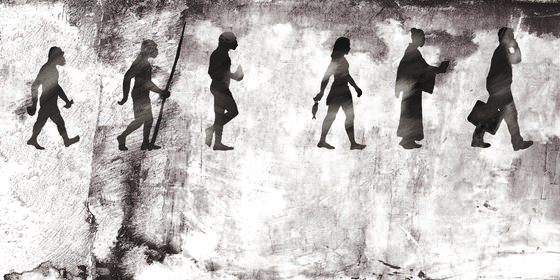The Qin’s terracotta warriors changed the lives of the peasants who discovered them—not for the better
It’s a classic tale: Farmer digs well, discovers priceless terracotta army, is relentlessly persecuted until he commits suicide.
In March 1974, a work team led by peasant-farmer Wang Puzhi stumbled over what’s perhaps the most significant archaeological find in modern China: The battalion of terracotta warriors of the first emperor of the Qin dynasty, painstakingly crafted to guard his tomb.
According to historical records, the craftsmen involved with the tomb’s construction were executed to prevent the location from leaking. Thankfully 2,200 years later, civilization had progressed, and the tomb’s discoverers didn’t need to be put to death. Yet a happy ending still eluded most of them.
In the dying days of the Cultural Revolution, on what was seemingly just another ordinary afternoon on the communal farm for Wang and his six-man crew, when, 15 meters below the soil, their spades suddenly struck gold—or in this case, terracotta.
It’s now accepted that well-digger Yang Zhifa was the one who made the discovery. Thinking he had found a bronze relic that his work team could sell for a few packets of cigarettes, he used a hammer to break off the head and took it back to the village.
“Everyone was afraid to touch it,” worker Yang Quanyi told the South China Morning Post in 2007. “We thought it was a temple statue—a Buddha perhaps. We were frightened the Buddha would punish us. The women thought it might bring a curse down on the village.”
The women turned out to be right. The discovery of 8,000 terracotta soldiers, archers, and charioteers from the third century BCE brought down a swarm of local officials and experts, each desperate for a piece of the action. The villagers’ farmland was appropriated and excavated, the compensation allegedly stolen by local cadres; three of the men ultimately died of illness “in great pain…[without] money for medicine or help. We have no idea what killed them,” Yang Quanyi told the SCMP.
As the site grew, so the pain spread: More homes were demolished; more compensation was stolen; several villagers committed suicide, as their ancient homes made way for souvenir stands and gift shops. A select few made money from joining the commercial bonanza, while seemingly everyone in government positions got rich. Petitioners to Beijing were threatened and turned away; Yang’s work unit, meanwhile, was virtually erased from history: “Not one of the group of seven is named or photographed anywhere within the complex in Xi’an—they are alluded to only as a band of peasant farmers,” declared the SCMP.
Rubbing salt into the wound, fake farmers took to loitering at the tourist site, pretending to be one of those who made the doomed discovery 44 years ago. Meanwhile, the real farmers scraped a living signing books for tourists, earning just 1,500 RMB a month.
In 1997, an ailing Wang Puzhi waited until his family was out, then tied a rope around his neck and hanged himself. Three years later, the two youngest farmers in the original team “died in their 50s, jobless and penniless.” Yang Zhifa fared a little better: In 1998, while visiting the warriors, Clinton obtained an autograph from Yang, who had been signing books at Xi’an’s Qin Terracotta Warriors and Horses Museum since 1995. The photograph of the meeting—captioned with Yang’s name—is displayed at the museum.
In 1999, the High People’s Court of Shaanxi Province named Yang Zhifa, Yang Yanxin, Yang Quanyi, and Yang Xinman as the discoverers of the relics. Yang Zhifa has also been named honorary director of the Terracotta Warriors Museum, a position purportedly with retirement benefits.
Yet when journalists from Shaanxi’s CNWest.com visited Yang Zhifa in 2014, they found the 76-year-old director cynical and close-lipped about his discovery: “How many people do you think can fit at the bottom of a well? It’s only so wide. If they want to say it’s a dozen, nine, six, let them. There were however many people the authorities say there were. It was discovered by whoever the authorities say discovered it.”
“I’m just a peasant; what can I do about it?” he added. Furthermore, New West magazine reported that Yang Zhifa, rather than “retiring,” actually quit his book-signing job when his employer refused to let him take a one-hour break. Afterwards, he was replaced—with one of the impostors.
In 2004, a lawyer volunteered to help Yang Xinman petitioning the government to award certificates to “all nine” discoverers (the original well-diggers and two supervisors) and include their names in museum publications, but got nowhere. Lawyer Yang noted that Zhao Kangmin, the first archaeologist to excavate the site, had actually been recognized as a discoverer, by the State Council.
According to New West, local officials felt Zhao deserved the title because he was the first to recognize the fragments as Qin relics, whereas “many peasants had already been…selling bronze arrowheads for scrap metal, even putting a tattered straw hat on one intact warrior head to scare the sparrows from the fields.”
“It is not important who discovered these relics,” a spokesperson for the Shaanxi relics and cultural bureau told the SCMP in 2007. “Our job is to take care of these relics and to protect them.”
According to one report in the People’s Daily, “Peasants don’t know anything about science. It’s impossible that they should have discovered anything.” At least some of the remaining villagers must wish that were true.













